With the heat and isolated showers in Tennessee, diseases are brewing; but not all of them require fungicide application.
Cotton
To date I have not seen or gotten any confirmed reports of target spot nor areolate mildew in cotton in Tennessee. In fields that the canopy has closed or will close this week, and they have gotten rain showers this past week or so, I would suspect target spot to start showing up within the next week or 2. These would be our April planted cotton, but these fields will likely out run any damage to yield that target spot can cause and might just help defoliate the canopy going into fall. Later planted cotton (~May), should be scouted as their canopy closes or is already closed. Fungicide applications between 3rd week of bloom and 5th week of bloom has had the highest consistency in managing target spot. These applications don’t need to be ahead of seeing lesion, but are best applied once target spot lesions are seen and confirmed in the field (Image 1). Target spot rarely develops before the canopy closes and is found in the lower canopy, and few lesions on a leaf can cause it to drop off the plant (Image 2). There are other pathogens that can be ‘look-a-like’ but will not be confined to the lower, closed canopy.
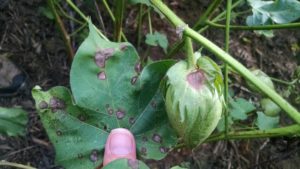

Also, be scouting cotton for the new, emerging disease – areolate mildew (Image 3). Again, I have not seen or gotten any confirmed reports of it in the state, this disease was only first reported in TN in 2022. The last 2 years areolate mildew has not shown up until mid-August. It doesn’t matter if canopy is open or closed and areolate mildew may be found outside of the lower canopy and end rows (Image 4). Please contact me and/or your local county agent if you believe you have areolate mildew so we can confirm and track its presence in TN. It is a defoliator like target spot, but can defoliate at a faster rate given certain circumstances. Similarly, fungicide efficacy in TN has been best with a timing at/around 3rd week of bloom to 5th week of bloom. More information on cotton diseases and identification can be found at https://guide.utcrops.com/cotton/cotton-foliar-diseases/.
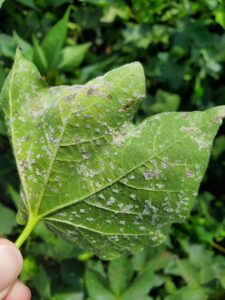
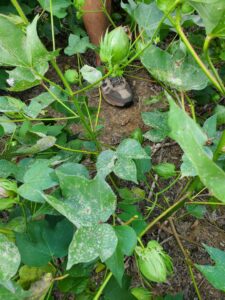
Corn
To date I have not seen or gotten any confirmed reports of southern corn rust, although it’s likely there is some of it around us – https://cropprotectionnetwork.org/maps/southern-corn-rust. Take note, the table on that page (also below, Table 1) – majority of TN corn, if not all of it, is past the point of needing a spray. Diseases I have seen in our corn include grey leaf spot, Diplodia leaf streak, Curvularia, and physiological leaf specking. Also, there has been no TN reports of the new, emerging corn disease – tar spot in TN this season, nor the past 2 years. Again, if you think you have tar spot please contact myself and/or your county agent so we can help confirm and track its presence in TN. More information on corn disease identification can be found at https://guide.utcrops.com/corn/.

Soybean
Foliar diseases are out in TN soybean fields, including Septoria brown spot (Images 5-6), frogeye leaf spot (Images 7-8), and target spot. Best fungicide application timing is at R3 (beginning pod), if seeing disease and can use UT variety database to see varieties potential yield protection with a fungicide at https://search.utcrops.com/soybean (Quick search database at top of page). I’ve also seen some downy mildew (Images 9-10) soybean vein necrosis virus and taproot decline – no fungicide for these diseases, but good to take note of them, particularly taproot decline to make sure you pick tolerant/resistant variety when you go back to that field. Taproot decline is a new, emerging disease and while it has only been reported in 4 counties in west TN, I believe it is more prevalent, but has been mistaken for other ‘look-a-like’ diseases such as sudden death syndrome, southern stem canker, and phytotoxicity (e.g. chemical burn). If you think you have taproot decline please contact myself and/or your county agent so we can help confirm and track its presence in TN. More information on soybean disease identification can be found at https://guide.utcrops.com/soybean/.
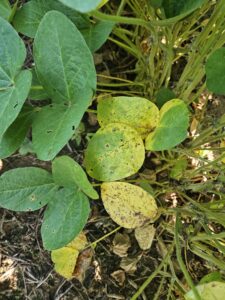

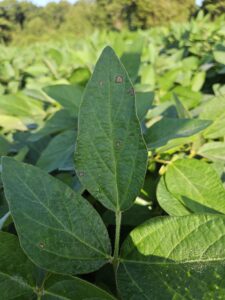
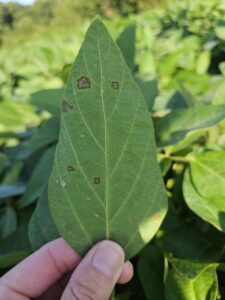

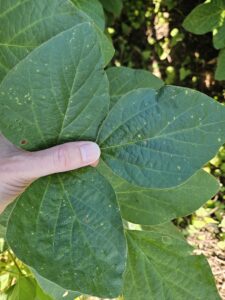
Heather Kelly
Extension/Research Field Crops Pathologist
731-425-4713, youngkelly@utk.edu

